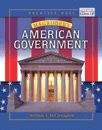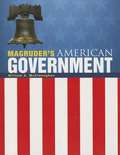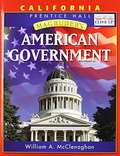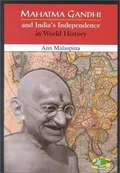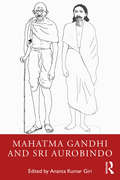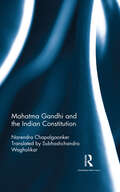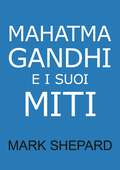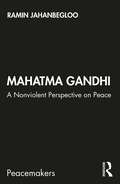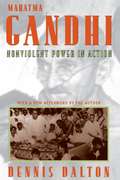- Table View
- List View
Magruder's American Government
by William A. McclenaghanMagruder's American Government, first published in 1917 and revised annually, is an enduring symbol of the author's faith in American ideals and American institutions.
Magruder's American Government
by William A. McclenaghanThe American system of government's fundamental principles and its basic structure have remained constant over time. Many of its other characteristics, however, have changed. A number of the features in this book are designed to help you understand how our government works and to encourage you to be an active, participating citizen.
Magruder's American Government
by William A. McclenaghanA number of the features in this book are designed to help you understand how our government works and to encourage you to be an active, participating citizen.
Magruder's American Government
by William A. McclenaghanMagruder's American Government is organized around Essential Questions. An essential question is a launching pad for exploring ideas. It doesn't have just one right answer. The answer to an essential question changes as you learn more or as circumstance change.
Magruder's American Government
by William A. McclenaghanThis book is designed to describe, analyze, and explain the American system of government.
Magruder's American Government
by William A. McclenaghanThe book intends to provide description, analysis, foundation and explanation of the American system of government.
Magruder's American Government
by William A. Mcclenaghan(High School) Hailed as a stellar educational resource for nearly a century, Magruder's American Government is updated annually to meet the changing needs of today's high school students and teachers. The program's engaging narrative is enhanced with numerous primary sources, political cartoons, charts, graphs, and photos, making the structure and principals of government accessible and motivating to students of all abilities.
Magruder's American Government (California Edition)
by William A. McclenaghanMagruder's American Government is updated annually to meet the changing needs of today's high school students and teachers. The program's engaging narrative is enhanced with numerous primary sources, political cartoons, charts, graphs, and photos, making the structure and principles of government accessible and motivating to students of all abilities.
Magruder's American Government: 2000
by William A. McclenaghanThis is a book about government--and, more particularly, about government in the United States.
Mahatma Gandhi
by Anne SchraffBiography of the famous Indian leader who preached non-violence. Guided by Time Magazine's list of 100 most influential people, this biography series focuses on the leaders, scientists, and icons who shaped our world. Each biography includes a glossary, timeline, and illustrations.
Mahatma Gandhi and His Apostles (Penguin Modern Classics)
by Ved MehtaVed Mehta's brilliant Mahatma Gandhi and his Apostles provides an unparalleled portrait of the man who lead India out of its colonial past and into its modern form. Travelling all over India and the rest of the world, Mehta gives a nuanced and complex, yet vividly alive, portrait of Gandhi and of those men and women who were inspired by his actions.
Mahatma Gandhi and India's Independence in World History
by Ann MalaspinaThe In World History series is a unique combination of biography and history. <BR>Each title in the series depicts a significant, fascinating historical event or era in dramatic detail while featuring a person of that event or era.
Mahatma Gandhi and Mass Media: Mediating Conflict and Social Change
by Teresa JosephThis book explores Gandhi’s engagement with print news media. It examines how Gandhi, the man and his message, negotiated with the sociopolitical circumstances of his milieu and the methods of communication that he adopted towards this end. It analyses the role that he played in building up alternative modes of communication in South Africa and India. This volume elucidates his interactions with the colonial communication order and his contestations of the same through various methods that included setting up new journals and newspapers and taking on the role of writer, journalist, editor, and publisher. It unveils Gandhi’s engagement with mass media and print journalism, particularly concerning issues of conflict and conflict resolution, as well as social transformation right from his days in London to the last days of his life. A significant contribution to scholarship on Mahatma Gandhi, this volume will be of great interest to scholars of politics, media and cultural studies, history, and South Asian studies.
Mahatma Gandhi and Sri Aurobindo
by Giri KumarThis book presents the first systematic critical exploration of the philosophical and political thoughts of Mahatma Gandhi and Sri Aurobindo, both pioneers of modern Indian thought. Bringing together experts from across the world, the volume examines the thoughts, ideas, actions, lives and experiments of Mahatma Gandhi and Sri Aurobindo on themes such as radical politics and human agency; ideals of human unity; social practices and citizenship; horizons of sustainable development and climate change; inclusive freedom; conceptions of swaraj; interpretations of texts; Sri Aurobindo’s views on Indian culture; integral yoga; transformative leadership; Anthropocene and alternative planetary futures. The book discusses the contemporary legacies and works of the two influential thinkers. It offers insights into historical, philosophical, theoretical, literary and sociological questions that establish the need for transdisciplinary dialogues and the relevance of their visions towards future evolution. This book will be useful to scholars and researchers of political science, Indian political thought, comparative politics, philosophy, Indian philosophy, sociology, anthropology, modern Indian history, peace studies, cultural studies, religious studies and South Asian studies.
Mahatma Gandhi and the Indian Constitution
by Narendra ChapalgaonkerWhy did the Constituent Assembly of India discard Mahatma Gandhi’s concept of constitutional structure that gave prominence to villages, and prefer parliamentary democracy instead? Why did the self-sufficient and self-governing village of his dream not find a place in India’s political edifice? This book explores these and other important questions that are intrinsically linked to the making of modern India. It traces the events leading up to Independence, the freedom struggle and the forming of the Constituent Assembly. The volume looks at the underlying foundations of the Indian nation state and the role of leaders like Jawaharlal Nehru, Sardar Vallabhbhai Patel and B. R. Ambedkar. It further explores the linkages and the dissonances between Gandhi’s ideas and principles and the Indian Constitution. Engaging and accessible, this book will be an interesting read for researchers and scholars of modern India, South Asian politics and history.
Mahatma Gandhi e i suoi Miti: Disobbedienza civile, Nonviolenza e Satyagraha nel Mondo Reale
by Mark Shepard‘’Tutte le mie azioni trovano la loro fonte nel mio amore inalienabile per l’umanità’’ – Gandhi Mahatma Gandhi è una delle figure meno comprese di tutti i tempi – anche tra i suoi ammiratori. Nell’Annual Gandhi Lecture per l’International Association of Gandhian Studies, Mark Sheperd discute su alcune visioni avventate su Gandhi, offrendoci un quadro più accurato sulla persona e sul suo utilizzo della nonviolenza.
Mahatma Gandhi y sus mitos: Desobediencia civil, no violencia y Satyagraha en el mundo real
by Mark Shepard"Todas mis acciones tienen su origen en mi amor inalienable por la humanidad". - Gandhi Mahatma Gandhi es una de las figuras menos comprendidas de todos los tiempos, incluso entre sus admiradores. En esta Conferencia Anual de Gandhi para la Asociación Internacional de Estudios Gandhianos, Mark Shepard aborda algunas visiones persistentemente equivocadas de Gandhi, ofreciéndonos una imagen más precisa del hombre y su no violencia. "Un modelo de periodismo gandhiano ... [Shepard] ha señalado aparentemente todos los conceptos erróneos populares (y algunos menos comunes) tanto de Gandhi como de su filosofía, incluidos algunos particularmente importantes ... Este libro toma poco espacio para cubrir su tema de manera concisa y bien. Serían [algunas] de las páginas más valiosas que muchas personas podrían leer sobre Gandhi ". - Conciencia global, julio-septiembre. 1990
Mahatma Gandhi: A Nonviolent Perspective on Peace (Peacemakers)
by Ramin JahanbeglooThis book maps the genesis and development of Gandhi’s idea of non-violence. It traces the evolution of the message of peace from its first expressions in South Africa to Gandhi’s later campaigns against British rule in India, most prominently the Salt March campaign of 1930. It argues that Gandhi’s blueprint for change must be adopted in the present, as the world craters on the precipice of catastrophic climate change, and the threat of nuclear war hangs over our heads. A timely book for uncertain times, this work is a reminder of the value of peace in the 21st century. It will be of great interest to readers, scholars and researchers of peace and conflict studies, politics, philosophy, history and South Asian studies.
Mahatma Gandhi: Nonviolent Power in Action (Bibliographies And Indexes In World History #No. 42)
by Dennis DaltonDennis Dalton's classic account of Gandhi's political and intellectual development focuses on the leader's two signal triumphs: the civil disobedience movement (or salt satyagraha) of 1930 and the Calcutta fast of 1947. Dalton clearly demonstrates how Gandhi's lifelong career in national politics gave him the opportunity to develop and refine his ideals. He then concludes with a comparison of Gandhi's methods and the strategies of Martin Luther King Jr. and Malcolm X, drawing a fascinating juxtaposition that enriches the biography of all three figures and asserts Gandhi's relevance to the study of race and political leadership in America. Dalton situates Gandhi within the "clash of civilizations" debate, identifying the implications of his work on continuing nonviolent protests. He also extensively reviews Gandhian studies and adds a detailed chronology of events in Gandhi's life.

